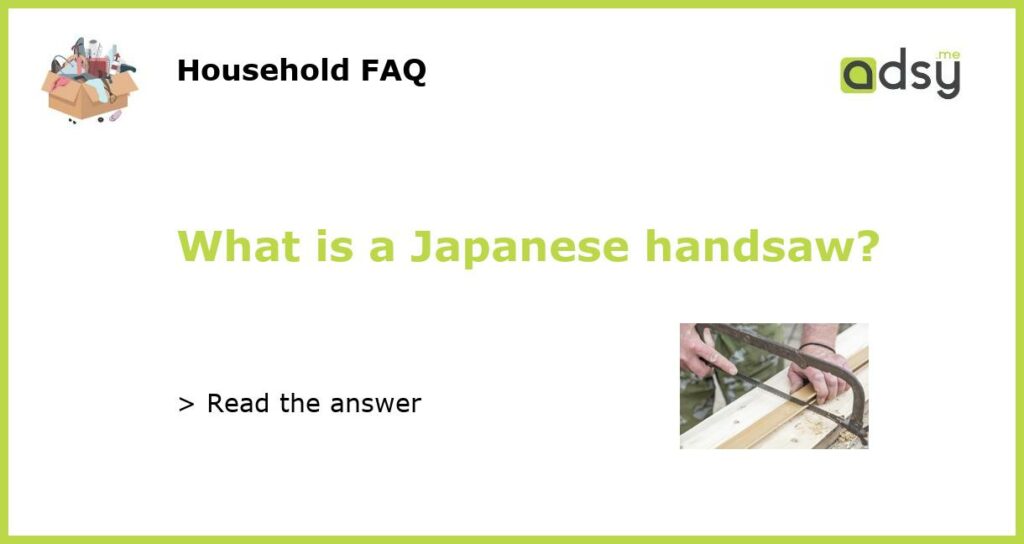What is a Japanese Handsaw?
A Japanese handsaw, also known as a Noko Giri or a Razorsaw, is a unique saw that differs from the saws commonly used in the Western world. Japanese saws cut on the pull stroke, rather than the push stroke, which is a key difference in the design of the saw.
The Design of a Japanese Handsaw
A Japanese handsaw has a thin blade with teeth on one side. The teeth are set at a precise angle and are designed to cut cleanly and smoothly through wood with minimal effort. The handle of the saw is typically made of wood, and the blade is attached to the handle with a bamboo or wooden peg.
The Advantages of a Japanese Handsaw
Many woodworkers prefer using a Japanese handsaw over a Western saw for a few reasons. Firstly, the pull stroke creates less pressure on the blade, which means the blade is less likely to bend. This allows the blade to be thinner, which makes it easier to make precise cuts. Additionally, the teeth of a Japanese handsaw are designed to cut on the pull stroke, which means the saw does not require as much force to cut through wood.
How to Use a Japanese Handsaw
When using a Japanese handsaw, it is important to keep the blade in a straight line while cutting. The pull stroke technique requires less force than a push stroke, so it is important to let the blade do the work. Additionally, it is important to maintain the correct angle while cutting to prevent the blade from binding.
Where to Buy a Japanese Handsaw
Japanese handsaws can be purchased at many woodworking stores and online retailers such as Amazon and Japan Woodworker. They vary in price depending on the quality of the saw, but many woodworkers find the investment in a high-quality Japanese handsaw well worth it.






